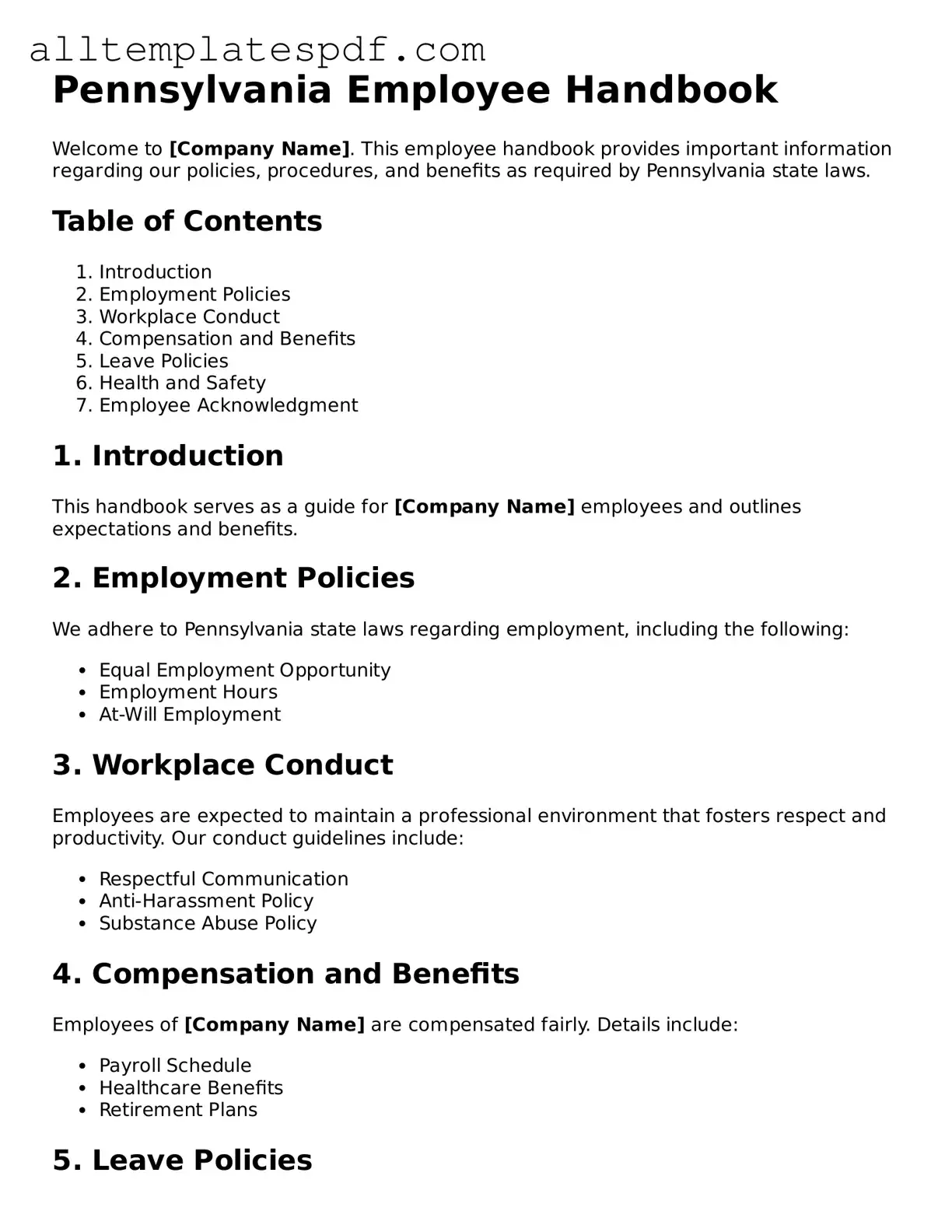Filling out the Pennsylvania Employee Handbook form can be straightforward, but many people make common mistakes that can lead to confusion or issues later on. One frequent error is not reading the instructions carefully. Each section of the form has specific requirements, and overlooking these can result in incomplete or incorrect submissions.
Another common mistake is failing to provide accurate personal information. This includes your name, address, and contact details. Inaccuracies can lead to problems with communication and may affect your employment records. Always double-check that the information is correct before submitting the form.
Some individuals forget to sign and date the form. This step is crucial, as an unsigned form may be considered invalid. It’s a simple oversight, but it can cause delays in processing your paperwork. Ensure that you have included your signature and the date in the appropriate places.
Additionally, people often skip reading the entire handbook before signing the acknowledgment section. Understanding the policies and procedures outlined in the handbook is important. By not familiarizing yourself with these guidelines, you may miss critical information regarding your rights and responsibilities as an employee.
Another mistake involves not asking questions when something is unclear. If you encounter terms or policies that you don’t understand, it’s essential to seek clarification. Ignoring uncertainties can lead to misunderstandings about workplace expectations.
Some individuals also neglect to keep a copy of the completed form for their records. Having a personal copy can be beneficial for future reference, especially if questions arise later. Always make sure to retain a copy for yourself after submission.
Lastly, people sometimes fail to submit the form on time. Each employer has deadlines for submitting employee paperwork, and missing these can lead to complications in your employment status. Be mindful of the timeline and ensure that you submit your form promptly.
